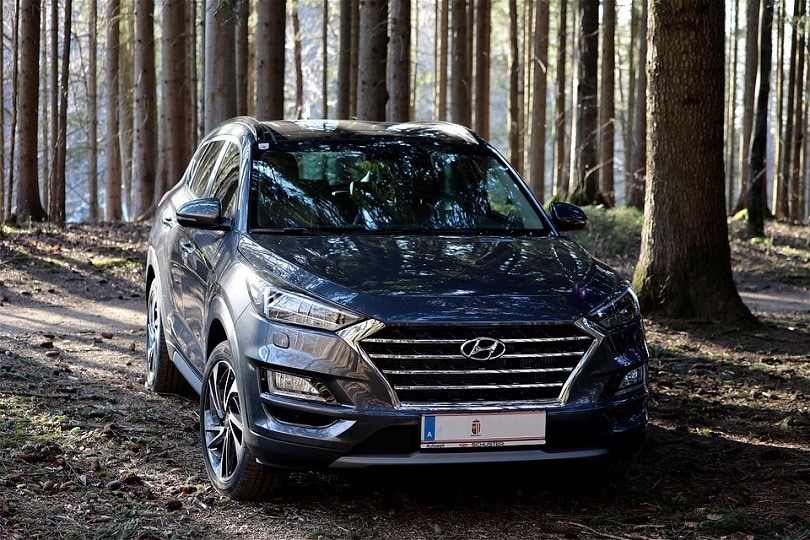Front-Wheel Drive vs. All-Wheel Drive: What’s the Difference?
-
- Last updated:

Most new cars come with a front-wheel drive, though it isn’t just luxury SUVs that come with all-wheel drive. Many saloons and hatchbacks come with AWD as an optional upgrade, but is it worth the thousands that you’ll have to pay for it? We look at the differences in the two drivetrains and which is better suited to your requirements and driving style.

Front-Wheel Drive
In a front-wheel-drive vehicle, the engine delivers all the power to the front wheels. This is the most common drivetrain in cars around the world because FWD cars are cheaper to build, offer more room, and have the advantage when it comes to hill climbing. Most drivers will benefit from a front-wheel-drive vehicle.

The Advantages
A front-wheel-drive system has fewer moving parts. This makes it cheaper to manufacture and install, and reduced costs benefit the consumer with a cheaper price tag. You can expect to pay several thousand dollars less for a front-wheel-drive compared to an all-wheel-drive variant of the same model and year.
There are fewer components to fail and maintain. Not only do you pay less at the showroom, but you pay less on annual maintenance too.
Having fewer components also makes for a lighter car. Because the engine has less weight to carry around, it uses less gas to do so, which translates to less money spent at the pump every year.
Front-wheel drive systems take up less room in the car. The rear passenger cabin of an FWD vehicle offers more room for passengers. The drivetrain also requires less room up front, so the front cabin will usually be roomier as well.
All the drivetrain weight is located over the front wheels, which means that front-wheel drive vehicles enjoy better traction when driving uphill.
The Disadvantages
If one of the front wheels loses traction — for example, because of a patch of ice — the car has to rely on the grip from one tire. This means that a front-wheel-drive vehicle can be prone to sliding in difficult conditions. However, modern front-wheel-drive vehicles incorporate systems like traction control and anti-lock brakes, which minimize this loss of traction.

All Wheel Drive
An all-wheel-drive system uses a pair of axles to split the power between the front and rear wheels. The engine delivers power to all four wheels. If one wheel loses traction, the rest can compensate by giving extra grip and improving overall traction. Most AWD systems send more power to the front wheels, although some sportier models send more power to the rear. Adaptive systems can vary the amount of power to each axle according to the driver’s preference or prevalent driving conditions.
Types Of AWD
There are two primary types of AWD systems:
- Full-Time — The engine provides power to all four wheels all the time. The amount of power sent to the front and rear tires can change according to conditions, but all four wheels receive some power.
- Part-Time — In normal driving conditions, a part-time all-wheel-drive system only sends power to the front wheels. However, when conditions demand it, the rear wheels will receive some of the power. This kind of system can improve fuel economy over a full-time system but will still use more gas than a front-wheel-drive vehicle.

Is All-Wheel Drive the Same as Four Wheel Drive?
All-wheel-drive systems are especially useful in snowy and wet conditions and general off-road conditions. However, they are not the same as full four-wheel-drive systems. Four-wheel drive has lower gearing for climbing rocks and taking on other challenging terrains. Four-wheel drive isn’t necessary for driving in flat fields.
The Advantages
The primary advantage of an all-wheel-drive vehicle is the increased traction. If one or more wheels start to slip or lose traction, the rest of the wheels compensate. This type of system can prove useful in snow, as well as on patches of mud or ice, because the driver retains greater control over the vehicle.
The Disadvantages
The all-wheel-drive system has more parts and more moving components. These are more expensive to manufacture and take more work to install, which increases the cost of the vehicle and makes them more expensive. Where AWD is an optional extra, it can add thousands to the ticket price of a vehicle.
More components also mean a greater chance of one wearing down or becoming damaged. They are also more difficult to repair because the components are tightly packed and difficult for the mechanic to reach. Maintenance costs are higher with this type of system.
All-wheel-drive systems need more space because they have more parts. This means less legroom in the rear cabin and less space in the front cabin. In large vehicles, this isn’t an issue, but smaller vehicles can become especially cramped.
The additional components also increase the overall weight of the vehicle. Additional weight means extra pressure on the engine, potentially leading to greater wear and tear and increasing fuel consumption. Expect to pay more at the fuel pumps, as well as the mechanics.

Front-Wheel vs. All-Wheel Drive
For most people, front-wheel drive is more than adequate. Modern FWD vehicles come equipped to cope with snow and rain, and winter tires further increase traction in wintry conditions without the same high costs associated with an all-wheel-drive transmission. However, if you regularly take your car on general off-road terrain, such as fields, you will benefit from the extra control and grip afforded by an all-wheel-drive system.
Contents

